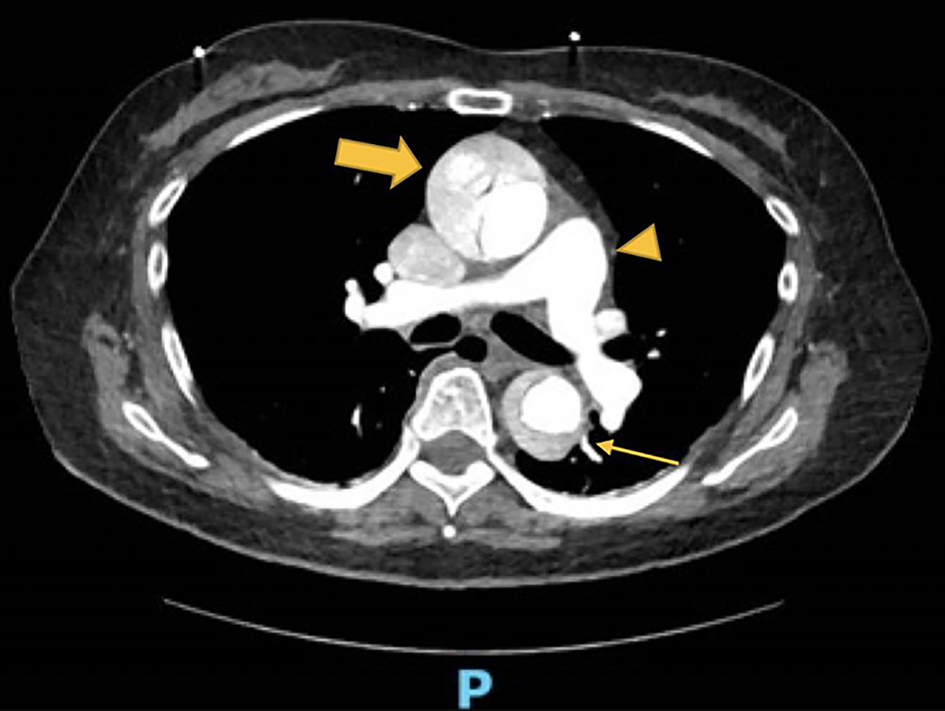
Figure 1. Computed tomography (CT) angiogram showing aortic dissection in the ascending aorta (arrow) and descending aorta (thin arrow), and no clots within the pulmonary artery to suggest pulmonary embolism (arrowhead).
| Journal of Medical Cases, ISSN 1923-4155 print, 1923-4163 online, Open Access |
| Article copyright, the authors; Journal compilation copyright, J Med Cases and Elmer Press Inc |
| Journal website https://www.journalmc.org |
Case Report
Volume 12, Number 4, April 2021, pages 145-148
Profound Hypoxemia From Right Ventricular Failure Following Acute Type A Aortic Dissection
Figure

Table
| Equipment-related problems |
| Endobronchial intubation |
| Esophageal intubation |
| Endotracheal tube malfunctions - kinking of tube, blockage by secretions, leaking balloon cuff |
| Improper ventilator settings |
| Ventilator and breathing circuit malfunctions - blockage or leaks in breathing circuit, machine faults such as stuck valves, low oxygen supply to the machine |
| Progression of underlying disease |
| Adult respiratory distress syndrome |
| Acute pulmonary edema |
| Pneumonia |
| Airway obstruction - asthma, chronic obstructive pulmonary diseases (COPD) |
| Onset of a new problem |
| Pneumothorax |
| Atelectasis or mucous plugging with lung collapse |
| Gastric aspiration |
| Pulmonary emboli |
| Bronchospasm |
| Shock |
| Side effects of interventions, procedures and medications |
| Endotracheal suctioning |
| Position changes |
| Chest physiotherapy |
| Bronchoscopy |
| Anaphylaxis from medications |
| Vasodilators with resultant hypotension |